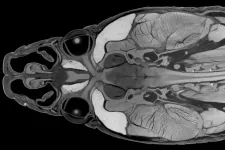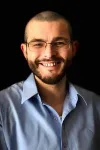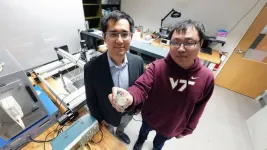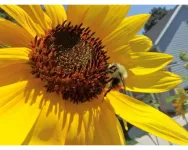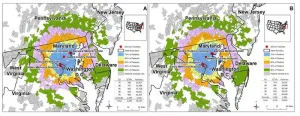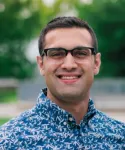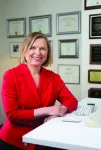(Press-News.org) Reading about the latest scientific discovery – such as the unearthing of a fossil representing a new species of tiny dinosaur – can be fascinating. But what if it were possible to do more than just read about it? What if you could go online, download a digital model and 3D print an exact replica of that fossil within minutes of reading the news? That is the goal of the Non-Clinical Tomography Users Research Network, or NoCTURN, an international group of researchers spearheaded by theUniversity of Arizona Health Sciences, the American Museum of Natural History, the University of Florida and the University of Texas. They want to open the doors of science and let everyone in.
“There are a lot of datasets available in various research repositories, but there are easily hundreds of thousand more on the hard drives and servers of all of the people who are funded by federal governments to do computed tomography research around the world, so only a small fraction are available to the public,” said Paul Gignac, PhD, who is on the NoCTURN leadership team and is an associate professor of cellular and molecular medicine at the UArizona College of Medicine – Tucson. “We’d like to see that availability expand tenfold as it becomes more commonplace and expected that researchers and imaging facilities share these data in public repositories.”
Computed tomography, commonly referred to as CT scanning in the medical field, has transformed science across many disciplines by allowing for the nondestructive 3D imaging of complex, opaque objects. Whether studying organismal biology, manufacturing techniques, experimental medical devices, engineering structures, geological samples, prehistoric artifacts or fossilized organisms, CT is a core element in science, technology, engineering and mathematics research and outreach toolkits.
Computed tomography’s relative newness as a scientific tool – the first CT scanner is just over 50 years old – and its quick ride to popularity have resulted in a fractured CT landscape.
“There are dozens of manufacturers of high-resolution CT scanners, but few standards between them,” Gignac said. “When I explain how I did a scan to one of my colleagues, we might not even be using the same language because the terminology for the same parameters isn’t identical. I can send my colleague some files, but he or she may not be able to open them with their software because some file types are proprietary. Through NoCTURN, we are trying to smooth out those kinds of interoperability issues.”
NoCTURN, a National Science Foundation Research Coordination Network, is a collaboration of 75 researchers from 42 institutions around the world with the common goal of improving data handling across scientific disciplines. The group was formed in 2022 just as the U.S. Office of Science and Technology Policy released the Nelson Memorandum, which updated policy guidance to promote equity and transparency in research and improve public access to federally funded research results.
NoCTURN members engage with imaging facilities, academic departments and data repositories to encourage data sharing while improving findability, accessibility, interoperability and reuse of digital assets. Additionally, they work with private companies to standardize data acquisition, handling and sharing to better reflect the principles of open science.
“Open science and FAIR principles – findable, accessible, interoperable and reusable – should be the bedrock for science in the 21st century,” Gignac said. “Our goal is to develop practical recommendations that link today’s tomography data with tomorrow’s tomography discoveries. NoCTURN can be a template for other organizations on how to utilize the power of large networks to motivate communities to develop open science policies and practices.”
The development of NoCTURN was detailed in a recent paper by Gignac and colleagues, “The role of networks to overcome large-scale challenges in tomography: The non-clinical tomography users research network,” published in the journal Tomography of Materials and Structures.
NoCTURN is funded in part by the National Science Foundation under Award Nos. OAC-2226184, OAC-2226186 and OAC-2226185.
END
UArizona Health Sciences professor uses CT network to promote public access to open science
Researchers are meeting where the science of computed tomography intersects with policies and practices to ensure that publicly funded data collection can be made widely available and understandable by diverse communities.
2024-05-22
ELSE PRESS RELEASES FROM THIS DATE:
Designing autism-inclusive healthcare environments
2024-05-22
Autism is the most common neurodevelopmental disorder in the U.S., affecting an estimated one out of 36 children. Most people with autism experience unique sensory features such as differences in reactivity to touch, sounds, and sights or difficulty managing multiple sensory inputs at the same time.
These sensory differences can make the healthcare environment — often characterized by fluorescent lights, idle waiting rooms and uncomfortable pokes and prods — difficult to navigate, preventing children with autism from getting the care they need. To change that, occupational therapists Roseann ...
Zhenhua Tian receives National Science Foundation CAREER award to develop invisible acoustic tweezers
2024-05-22
Medical procedures capable of moving cells inside the body without making incisions have unique benefits. From faster recovery times to less trauma impacting the body, the list of reasons to do surgery without scalpels is growing with the technology used to perform noninvasive treatments.
A new method that might be available in the future is coming to life through research conducted by Zhenhua Tian’s team. The assistant professor in the Department of Mechanical Engineering is using tube-shaped acoustic energy to capture tiny biological ...
Community science volunteers can set scientific world abuzz with new bumble bee sightings
2024-05-22
TORONTO, May 22, 2024 – Community science volunteers – laypeople with an interest in bees and conservation – significantly contribute to the scientific knowledge of native bumble bees across Canada and the United States, finds a new study by York University.
It’s buzz worthy confirmation that community science programs can play an important role in monitoring the changing distributions of bumble bees and more. Community scientists have importantly also detected several at-risk or endangered species in unexpected locations, including the rusty-patched bumble bee and the gypsy cuckoo bumble bee. Trained scientists often haven’t seen some ...
Proximity to a cancer center contributes to cancer stage at diagnosis, study finds
2024-05-22
Location, race and insurance status play a significant part in the odds of a patient being diagnosed with early-stage or late-stage cancer, according to a detailed medical records analysis of more than 94,000 patients with cancer by researchers at the Johns Hopkins Bloomberg School of Public Health and the Johns Hopkins Kimmel Cancer Center.
Patients who lived farther away from a facility designated a comprehensive cancer center (CCC) by the National Cancer Institute (NCI) and who received only a diagnosis or only treatment at the center had higher than average odds of a late-stage diagnosis, ...
Study suggests it may be safe to de-escalate surgery in middle-aged breast cancer patients
2024-05-22
Surgery involving sentinel lymph node biopsy for middle-aged women with estrogen receptor-positive (ER+) breast cancer may do more harm than good, according to a new study led by University of Pittsburgh and UPMC Hillman Cancer Center researchers. The team used a novel artificial intelligence pipeline developed by Realyze Intelligence, a UPMC Enterprises portfolio company, to analyze electronic health records.
The findings, published today in JCO Clinical Cancer Informatics, suggest that clinical guidelines for de-escalating surgery in women aged over 70 years with early-stage ER+ breast cancer may be safely ...
Eating more ultra-processed foods tied to cognitive decline, stroke
2024-05-22
MINNEAPOLIS – People who eat more ultra-processed foods like soft drinks, chips and cookies may have a higher risk of having memory and thinking problems and having a stroke than those who eat fewer processed foods, according to a new study published in the May 22, 2024, online issue of Neurology®, the medical journal of the American Academy of Neurology. The study does not prove that eating ultra-processed foods causes memory and thinking problems and stroke. It only shows an association.
Ultra-processed foods are high in added sugar, fat and salt, and low in protein and fiber. They include soft drinks, salty and sugary snacks, ...
What factors predict when older adults will stop driving?
2024-05-22
MINNEAPOLIS – What factors lead older adults to stop driving? A new study followed older adults who had no memory or thinking problems to examine this question. The study is published in the May 22, 2024, online issue of Neurology®, the medical journal of the American Academy of Neurology.
“Alzheimer’s disease develops over a long time—people may have a 10- to 15-year period where they have no symptoms, but the disease process is developing in the brain,” said study author Ganesh M. Babulal, PhD, OTD, of Washington University School of Medicine in St. ...
Subtle cognitive decline precedes end to driving for older adults
2024-05-22
One of the thorniest decisions facing older adults is when to give up their keys and stop driving. A new study by researchers at Washington University School of Medicine in St. Louis could provide guidance in helping seniors plan ahead. The researchers found that impaired cognitive function foreshadows the decision for many seniors to stop driving — more so than age or molecular signs of Alzheimer’s disease. Even very slight cognitive changes are a sign that retirement from driving is imminent. Further, women are more likely to stop driving than ...
Irina Petrache, MD, ATSF, commences term as President of the American Thoracic Society
2024-05-22
May 22, 2024 – Irina Petrache, MD, ATSF, today added president of the American Thoracic Society to her list of accomplishments. The announcement came on the heels of the Plenary Session at the ATS 2024 International Conference. The slate of officers to serve on the Society’s Executive Committee for the 2024-2025 term consists of the following:
Irina Petrache, MD, ATSF, Incoming President
Dr. Petrache is professor of medicine at National Jewish Health and at the University of Colorado. She also serves as chief of Pulmonary, Critical Care and Sleep Medicine, associate ...
Beach erosion will make Southern California coastal living five times more expensive by 2050, USC study predicts
2024-05-22
Contact: Nina Raffio, raffio@usc.edu or (213) 442-8464
Rising sea levels and urban development are accelerating coastal erosion at an alarming rate in Southern California with significant ripple effects on the region’s economy, a USC study reveals.
The study, published in Communications Earth & Environment, predicts that Southern California’s coastal living costs will surge fivefold by 2050 as a direct result of beach erosion. This erosion will require more frequent and costly beach nourishment projects to maintain the state’s treasured shorelines, consequently driving up the cost of living along the coast.
“Our ...
LAST 30 PRESS RELEASES:
Keck Medicine of USC names Christian Pass chief financial officer
Inflatable fabric robotic arm picks apples
MD Anderson and SOPHiA GENETICS announce strategic collaboration to accelerate AI-driven precision oncology
Oil residues can travel over 5,000 miles on ocean debris, study finds
Korea University researchers discover that cholesterol-lowering drug can overcome chemotherapy resistance in triple-negative breast cancer
Ushikuvirus: A newly discovered giant virus may offer clues to the origin of life
Boosting the cell’s own cleanup
Movement matters: Light activity led to better survival in diabetes, heart, kidney disease
Method developed to identify best treatment combinations for glioblastoma based on unique cellular targets
Self-guided behavioral app helps children with epilepsy sleep earlier
Higher consumption of food preservatives is associated with an increased risk of type 2 diabetes
NTU Singapore-led team captures first-ever ‘twitch’ of the eye’s night-vision cells as they detect light, paving the way for earlier detection of blindness-causing diseases
Global aviation emissions could be halved through maximising efficiency gains, new study shows
Fewer layovers, better-connected airports, more firm growth
Exposure to natural light improves metabolic health
As we age, immune cells protect the spinal cord
New expert guidance urges caution before surgery for patients with treatment-resistant constipation
Solar hydrogen can now be produced efficiently without the scarce metal platinum
Sleeping in on weekends may help boost teens’ mental health
Study: Teens use cellphones for an hour a day at school
After more than two years of war, Palestinian children are hungry, denied education and “like the living dead”
The untold story of life with Prader-Willi syndrome - according to the siblings who live it
How the parasite that ‘gave up sex’ found more hosts – and why its victory won’t last
When is it time to jump? The boiling frog problem of AI use in physics education
Twitter data reveals partisan divide in understanding why pollen season's getting worse
AI is quick but risky for updating old software
Revolutionizing biosecurity: new multi-omics framework to transform invasive species management
From ancient herb to modern medicine: new review unveils the multi-targeted healing potential of Borago officinalis
Building a global scientific community: Biological Diversity Journal announces dual recruitment of Editorial Board and Youth Editorial Board members
Microbes that break down antibiotics help protect ecosystems under drug pollution
[Press-News.org] UArizona Health Sciences professor uses CT network to promote public access to open scienceResearchers are meeting where the science of computed tomography intersects with policies and practices to ensure that publicly funded data collection can be made widely available and understandable by diverse communities.
